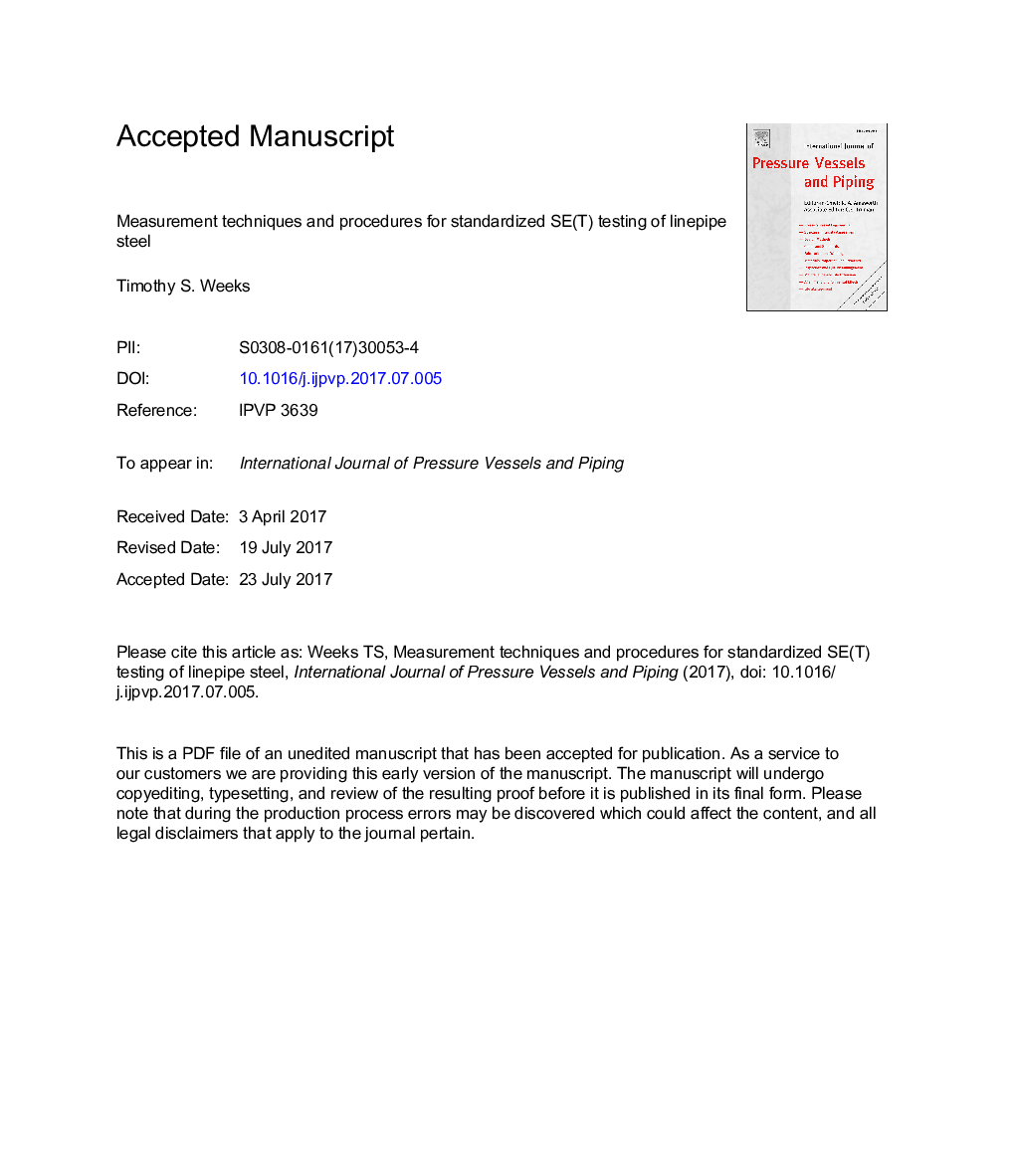| Article ID | Journal | Published Year | Pages | File Type |
|---|---|---|---|---|
| 7175107 | International Journal of Pressure Vessels and Piping | 2017 | 20 Pages |
Abstract
The single edge-notched tension (SENT or SE(T)) test uses a low-constraint specimen geometry to determine the elastic-plastic fracture toughness of relevant linepipe steels. Application of the results include, but are not limited to, design methods, material selection, structural integrity assessment, fitness for service (FFS) and engineering critical assessment (ECA). Until recently, industry and government researchers have developed and published recommended practices without consensus from standard development organizations. A test standard was recently issued in 2014 by the British Standards Institution as BS 8571, and there is an ongoing effort to publish a robust standard test method within the American Society of Testing and Materials (ASTM International). Standardization of any test method should consider the influence of physical measurements on the results of the test. Generically, all measurements have uncertainty, and a standardized test method endeavors to produce results with a minimum uncertainty, as well as known precision and bias so that the results can be intelligently used for their intended purpose. This paper reviews the measurement techniques and procedures from each of the published recommended practices and BS 8571 and provides further guidance on specific techniques and procedures with respect to uncertainty.
Related Topics
Physical Sciences and Engineering
Engineering
Mechanical Engineering
Authors
Timothy S. Weeks,
